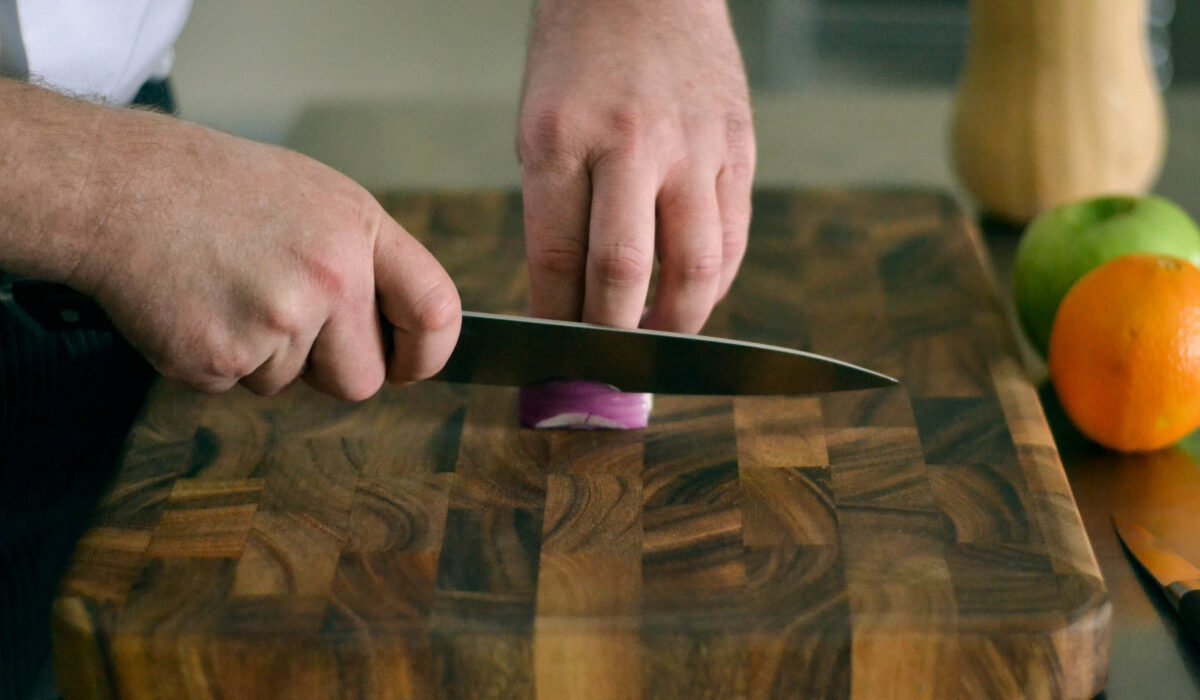For anyone who treasures their kitchen tools, understanding how to hone German knives is an essential skill. German knives, renowned for their durability and precision, can benefit greatly from regular honing. This process not only maintains the sharpness of the blade but also prolongs the life of your knife.
In this article, we’ll delve into the intricacies of honing, providing you with a comprehensive guide on maintaining your German knives in top condition. We’ll explore the science behind honing, the tools you’ll need, and step-by-step instructions to achieve razor-sharp blades. By the end, you’ll be equipped with the knowledge to keep your knives functioning at their best.

Understanding the Importance of Honing
Honing is not to be confused with sharpening. While sharpening involves the removal of material to create a new edge, honing is about realigning the existing edge. Over time, the fine edge of a knife bends out of alignment, reducing its cutting efficiency. Regular honing keeps the edge straight and true, ensuring each cut is smooth and precise.
The Science Behind Honing German Knives
German knives are typically made from softer steel compared to their Japanese counterparts, which means they can bend more easily. This characteristic makes honing particularly important for German knives. When you hone a knife, you’re using a honing rod to push the edge back to a straight line. This process corrects the microscopic deviations that occur with regular use.
Tools You’ll Need for Honing
- Honing Rod: A honing rod, often made of steel, ceramic, or diamond, is an essential tool for honing. Steel rods are common for German knives as they match the material of the blade.
- Knife: Of course, you’ll need your German knife, preferably washed and dried, ready for honing.
Step-by-Step Guide to Honing German Knives
1. Choose the Right Honing Rod
Select a honing rod that complements your knife. For German knives, a steel rod is often recommended. The rod should be longer than the blade of your knife to ensure a full stroke from end to end.
2. Prepare Your Knife
Before honing, clean your knife thoroughly. Any residue or moisture can affect the honing process and potentially damage the blade.
3. Hold the Honing Rod Correctly
Grip the honing rod firmly with one hand, and hold it vertically on a non-slip surface. Ensure that the tip of the rod is stable and won’t move during honing.
4. Position the Knife
Hold the knife in your other hand, placing the heel of the blade against the top of the rod. Angle the blade at approximately 15-20 degrees.
5. Hone the Knife
Gently draw the knife down the rod in a sweeping motion, moving from the heel to the tip. Maintain the angle consistently as you hone. Repeat this process about 5-10 times on one side, then switch to the other side.
6. Test the Sharpness
After honing, test the knife’s sharpness by slicing through a piece of paper or a tomato. The blade should cut cleanly and effortlessly.
Maintaining Your Honing Rod
Just like your knives, your honing rod requires maintenance. Regularly clean it with warm water and mild soap to remove metal particles. Dry thoroughly to prevent rust.
Common Mistakes to Avoid
Honing is straightforward, but there are common mistakes to watch out for. Avoid applying too much pressure, as this can damage the blade. Ensure the angle is consistent throughout the process. Also, remember that honing is not a substitute for sharpening; it’s a maintenance tool.

FAQs
How often should I hone my German knife?
It’s recommended to hone your knife every 2-3 uses to maintain the edge.
Can I use a ceramic rod for German knives?
Yes, ceramic rods are suitable and offer a finer grit for more precise honing.
What if my knife is still dull after honing?
If honing doesn’t restore the sharpness, it might be time to sharpen the knife.
By keeping these tips in mind and honing regularly, you’ll ensure that your German knives remain an effective tool in your kitchen. For further reading, you can explore the differences between German and Japanese knives, and learn why German knives are a favorite among many chefs.
This article contains affiliate links. We may earn a commission at no extra cost to you.


